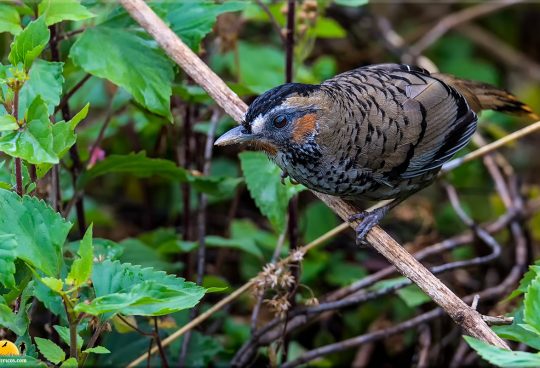The Himalayan monal (Lophophorus impejanus), also known as the Impeyan monal and Impeyan pheasant, is a bird in the pheasant family, Phasianidae. It is the national bird of Nepal, where it is known as the danphe, and state bird of Uttarakhand, India, where it is known as the monal. It was also the state bird of Himachal Pradesh until 2007. It is a relatively large-sized pheasant. These pheasants are amongst the most beautiful pheasants due to their striking metallic-colored plumage. The bird is about 70 centimetres long. The male weighs up to 2380 grams and the female 2150. The adult male has multicoloured plumage throughout, while the female, as in other pheasants, is more subdued in colour. Notable features in the male include a long, metallic green crest, coppery feathers on the back and neck, and a prominent white rump that is most visible when the bird is in flight. The tail feathers of the male are uniformly rufous, becoming darker towards the tips, whereas the lower tail coverts of females are white, barred with black and red. The female has a prominent white patch on the throat and a white strip on the tail. The first-year male and the juvenile resemble the female, but the first-year male is larger and the juvenile is less distinctly marked.
The male’s impressive display features bowing and vigorous waving of the rufous tail, but it is the iridescent plumage on the wings and neck that give the bird its reputation as the “nine-colored bird” consisting of interspersing mix of metallic colors of green, purple, red and blue. The adult male has a long, metallic-green crest, much like a peacock, changeable reddish copper on the back and sides of the neck and a prominent white back and rump while in flight. The tail feathers are uniformly rufous being darker towards the tips.
The males also have a large white patch on the rump. The breast and underparts are black and the tail is copper. The male also has a bare patch of turquoise blue skin around the eye.The Himalayan monal’s native range extends from Afghanistan and Pakistan through the Himalayas in India, Nepal, southern Tibet, and Bhutan. It lives in upper temperate oak-conifer forests interspersed with open grassy slopes, cliffs and alpine meadows between 2400 and 4500 meters, where it is most common between 2700 and 3700 meters. It descends to 2,000 m (6,600 ft) in the winter. Believed to show largest altitudinal movement of all Himalayan pheasants. It tolerates snow and digs through it to obtain plant roots and invertebrate prey. Not globally threatened (Least Concern). A widely distributed species that is still common throughout its range.
![]()






Sorry, the comment form is closed at this time.